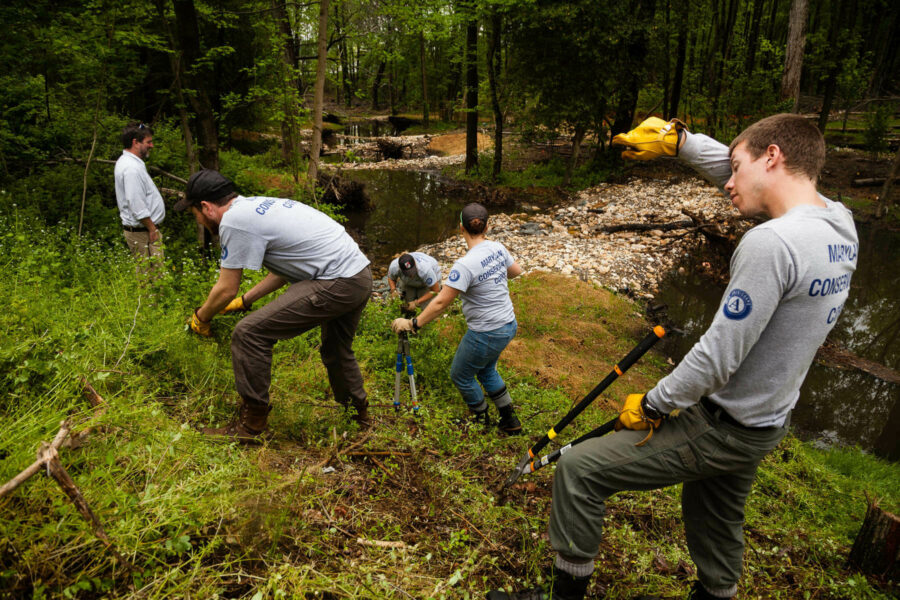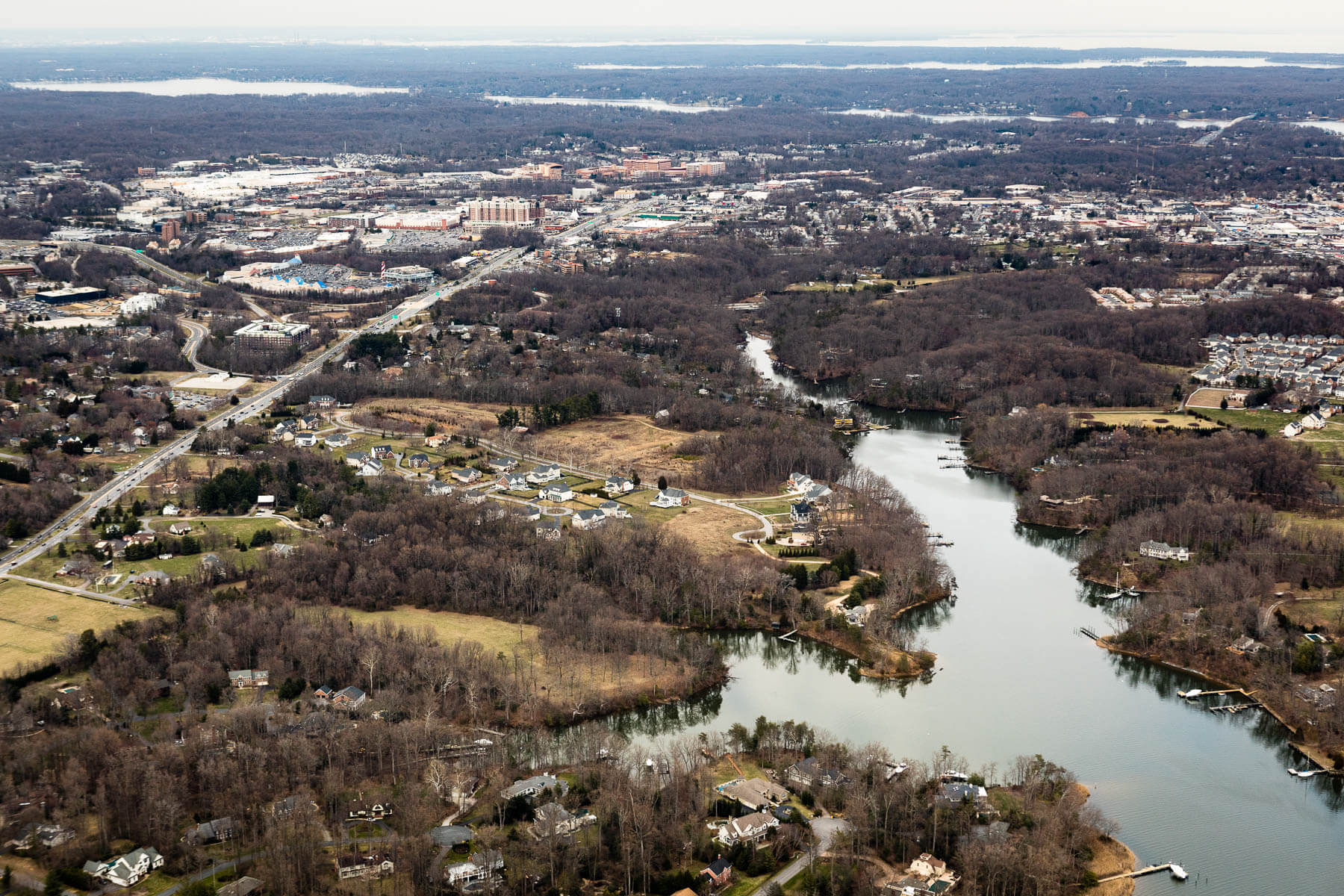An "impossible" stream to restore
Volunteers come together to complete a decade-long effort to clean up a tributary of Maryland's South River

A small, serene stream is tucked into the woods between two bustling shopping centers and a busy highway in Annapolis, Maryland. Although hidden, the declining health of this stream had raised concern for several years, causing many to doubt its ability to flourish again.
Meet the “impossible stream,” located near the Annapolis Harbour shopping center and one of four waterways that drains into Church Creek, the most impaired tributary of the South River. The creek faces many challenges in addition to the degrading quality of upstream waterways. Along its path, Church Creek encounters an abundance of developed land, including, more than 70 percent impervious surface. This means that stormwater draining into Church Creek, then the South River and eventually the Chesapeake Bay, is filled with sediment and other pollutants. In order to save Church Creek, the Annapolis Harbour Center stream had to be restored.
“Scientists have explained that creeks with 50 percent impervious surfaces are beyond the tipping point in that they need considerable intervention to be restored. Eighty percent impervious surface is crazy,” said Nancy Merrill-Sullivan, program outreach coordinator at South River Foundation. “We just wanted the creek to be functional again.”

The South River Federation partnered with the Maryland Department of Natural Resources, Anne Arundel County and the Chesapeake Bay Trust 15 years ago to begin a wide-scale restoration initiative to save Church Creek. This was a massive undertaking, encompassing 15 total restoration projects, including this one located behind the Annapolis Harbour Center.
“Annapolis Harbour Center was South River Federation’s first large scale commercial property restoration site,” said Kate Fritz, executive director of the Alliance for the Chesapeake Bay. “This became its cornerstone project over the years. There was a lot of dedication to this project.”
A leaky sewer line, invasive plants and a seven foot trash pile known as “Mt. Trashmoore” challenged the restoration team from the start. As they got further into the project, they encountered an area prone to flooding during storms, leading to trash accumulation and a massive amount of poison ivy covering the area, making it difficult to even reach the stream. Once they got there, they surveyed the stream and found a total of only 14 fish, which included eels and mosquito fish.
However, restoration persevered, and in 2016, after years of work, the partners created a plan and design for the project. Existing wetlands were expanded and then reconnected to the original floodplain to filter runoff, and step pools were put in place in order to help with the rapid flow of the stream. Volunteers planted thousands of native plants and trees to create forest buffers, which help protect the stream from stormwater runoff.
The ecosystem had a remarkable biological response to the restoration of the stream. Usually, it takes about two years to observe significant changes from a project of this magnitude; however, within eight months, the stream was resurveyed, counting 156 fish this time. There was also a resurgence of plants around the site, including skunk cabbage, which is an indicator of a healthy stream.
“We were not expecting such an increase in numbers in such a short time, especially for the stream’s condition,” said Merrill. “We’re almost at the two year mark since this project was completed and we have accomplished more than we ever thought possible with this site.”
This hard work has begun to pay off and is serving as an example for other restoration projects. For using new and innovative techniques to manage stormwater, the South River Federation received second place at the biennial BUBBA (Best Urban BMPs in the Bay Award) for Best Stream Restoration. But the work here is not quite finished. The team recently partnered with Smithsonian researchers to find out more about the health of the stream and biological condition concerning its water quality. Although the future is unknown, saving this stream doesn’t seem so impossible, after all.
View more photos of Church Creek restoration.

Comments
They did a beautiful job on this project and should be commended for their effort. I kayak up this creek regularly. Even with all our wonderful things that we’re doing to try to the restore the bay I believe it’s futile to save these once beautiful creeks. With the development all around, in this case 85% impervious surface, how can we do anything that will really save these waterways and the bay itself. It’s impossible to remove impervious surfaces so all we can really do is slow down the process of degradation.
Restoration of streams in urban landscapes is quite challenging and it is often treated as a distinct subdiscipline. The large amount of impervious cover in urban watersheds typically leads to transformed hydrology, and channels often incise in response to increased runoff and higher flow peaks. Urban sources account for significant quantities of important diffuse pollutants, and urban watercourses are typically badly polluted. As well as toxic metals, hydrocarbons including PAHs, and suspended matter, priority urban pollutants include fecal pathogens and nutrients.
Thank you!
Your comment has been received. Before it can be published, the comment will be reviewed by our team to ensure it adheres with our rules of engagement.
Back to recent stories